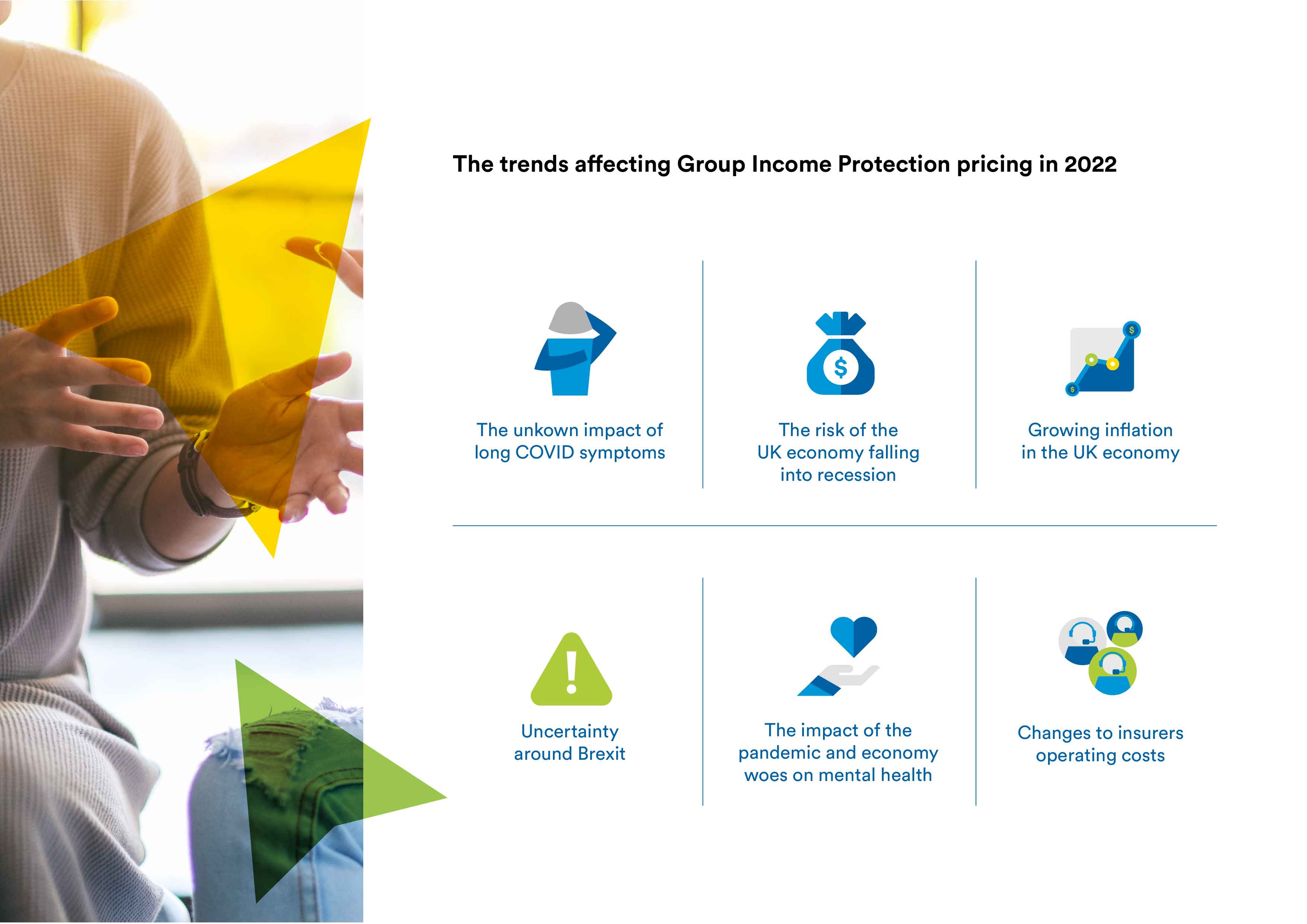Product and Insight
Group income protection (GIP) is a more complex product than group life from a pricing perspective. Rather than focusing on mortality, GIP insurers need to understand the risk that someone will be unable to work long-term as a result of an illness or injury and how long their inability to work might last. This is known as morbidity.
COVID-19 itself is unlikely to have a direct effect on GIP pricing. It’s usually a short-term illness and most people recover. However, insurers are monitoring some of the longer-term effects of COVID-19, namely long COVID and, more significantly from a pricing perspective, the economic fallout from the pandemic.
We’ve outlined 6 trends that have, and will, impact GIP pricing now and in the future.
1. Long COVID
Long COVID is a new condition and new cause of claim on GIP.
Although an estimated 2m people in the UK (3.1% of the population) were experiencing long COVID symptoms at the beginning of May 2022, the condition is still not fully understood.
From a GIP perspective, it is concerning that 20% of those with symptoms say their ability to go about their day-to-day activities was ‘limited a lot’; 42% of those with symptoms were infected at least a year previously; and the prevalence of long COVID is highest in people aged 35 to 69 years.
2. Risk of recession
GIP insurers are closely watching to see if the UK falls into recession in 2022.
Rising prices are certainly putting pressure on the economy, with the National Institute of Economic and Social Research warning that the squeeze on household incomes could cause the UK to fall into recession in the second half of 2022 .
The possibility of recession is significant to insurers as past experience, both in the UK and overseas, has shown that recessions are directly correlated with an increase in GIP claims. This is because economic pressures make the workplace more stressful, so employees are less likely to want to return from a GIP claim. Insurers also see more claims in subjective areas, such as back pain or mental health, where it is harder to determine whether someone is well enough to return to work.
Applying a differential by industry may be necessary for GIP insurers. This would reflect the fact that sectors are affected differently in the event of an economic downturn.
3. Inflation
Inflation is another factor that will influence GIP pricing in 2022.
After more than two decades of low inflation, rising prices saw the rate of inflation jump to 9% in the 12 months to April 2022 .
This is of particular concern to GIP insurers where claims are inflation-linked as a higher rate of inflation will mean payments increase at a faster rate.
Some policies limit the impact of inflation by setting a cap on the level of escalation, for example RPI up to a maximum of 2.5% or 5%. Additionally, where an insurer offers escalation at a fixed percentage, the rate of inflation will not affect claims costs.
4. Brexit
Brexit itself is unlikely to result in more GIP claims but it may add to inflationary pressures.
A study by the LSE Centre for Economic Performance found that the increase in UK-EU trade barriers had led to a 6% increase in food prices in the UK over the period between the end of 2019 and September 2021 in comparison to the years before December 2019 (4).
5. More mental health problems
Mental health has also been affected by the pandemic and these effects could be exacerbated by a recession.
The World Health Organisation’s Global Burden of Disease 2020 study points to a 27.6% increase in cases of major depressive disorder and a 25.6% increase in cases of anxiety disorders (5). This could potentially affect claims and pricing.
6. Expense changes
Changes to the way insurers operate could also have an influence on GIP premiums.
Following the pandemic, more employees are now working from home, at least part of the week, and this trend has reduced insurers’ operating costs.
As GIP premiums are made up of expected claims plus the insurer’s expenses and profit, this reduction in expenses may filter through to premiums. However, given other trends affecting risk and pricing, it will not necessarily lead to lower premiums.
With so many variables at play, GIP insurers will be closely watching the economy and how it could potentially affect public health and claims levels to ensure pricing accurately reflects risk.

